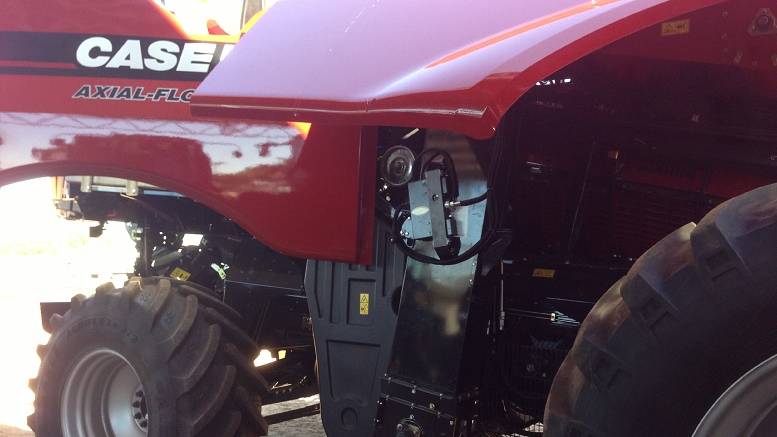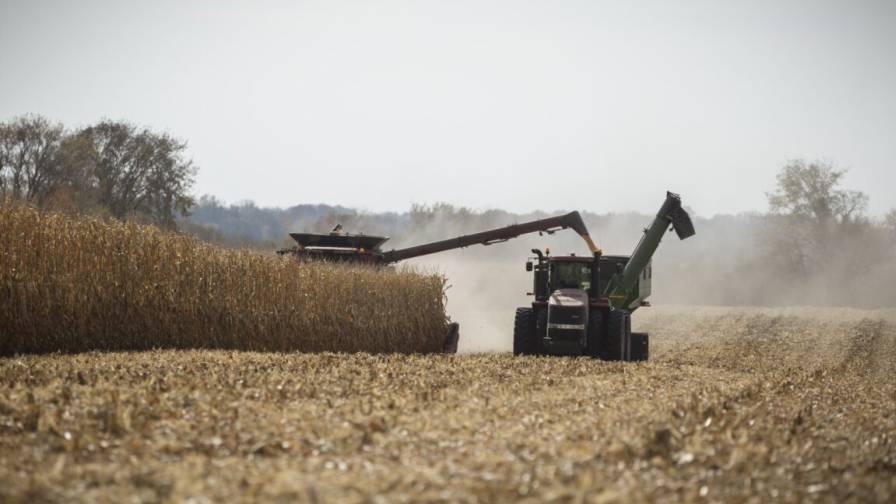Solid Year For Tech
Around the office, the increased adoption of high-speed Internet by retailers, and their grower-customers, is boosting access to tools that allow retailers to use the speed and convenience of the Web to communicate and do business with suppliers and customers more effectively.
What seemed to drive interest in technology solutions, especially in the Midwest, was the rampant optimism — and increased income — resulting from the biofuels movement.
But of course, it’s not all wine and roses. With increased row crop prices have come increased input costs, higher land values, and generally higher risk for growers. Increased income is being counterbalanced against increased costs of doing business. Harold Reetz, precision agriculture expert and president of the Foundation for Agronomic Research, asserts that precision agriculture can help mitigate risk by improving decision making.
“Precision agriculture had been sort of marginal on the cost/benefit decision process,” says Reetz. “But that has changed with current prices of fertilizer and grain. And given that yields have gone up considerably in last two to three years, every decision you make and every piece of information you use to make that decision becomes more valuable. And the risk of having the wrong information, or making the wrong decision, is considerably greater.”
Overall, though, market forces are working in favor of precision agriculture practices. “Basic trends in ag are benefiting precision ag,” says Jeff Farrar, ground ag marketing manager at Hemisphere GPS. “Once considered a luxury or just an extra, GPS guidance tools are playing roles with return-on-investment for the practitioner. With oil at over $90 a barrel, land prices soaring, cash rent on the rise, any tool that can help cut cost will be in high demand.
“It’s been a “good news, bad news” year for suppliers of technology as well. “High grain prices have had the biggest effect on our business, but the effect has been both positive and negative,” says Scott Cavey, president of retail management software manufacturer E-Markets. “High prices have diminished the amount of grain marketing program use because no one needed to be creative to get a high price on grain. On the other hand, it has been positive in that it infused money into the ag sector and it also has created a heightened sense of importance on seed availability and grain price risk for the ag retailer, so people need better systems to manage the increased volatility.”
Web: Speed Grows
Here’s a look at some of the top stories of the year 2007 for ag technology:
The E-Survey, a technology adoption study of retailers done annually by CropLife magazine, found that high-speed Internet again took a major step forward. Approximately 86% of retailers indicated they are using high-speed service, up from just over 75% last year. Virtually the entire gain was a boost in DSL adoption from dial-up services.
Automatic Steering’s Bust-Out Year
It’s been prognosticated since the dawn of automatic steering that if the price point came down enough without loss of accuracy, GPS automatic steering would take over the guidance market. The year 2007 would seem to be the bellwether for the technology. Nearly three of four respondents to the September CropLife e-Survey of retailers said they are using GPS automatic steering in their operation, and more than 80% of those using GPS guidance are employing GPS automatic steering. On the other side, lightbars took a significant slide, indicating retailers are upgrading for good.
Traceability Tests Out
In March, the Mid-America CropLife Association (MACA) launched its Traceability Implementation Project. Three retailers participated in the effort, which if successful would provide a platform for real-time tracking of crop protection product movement. In October, the participants and MACA declared the project a success.
Three retailers received the computer software, a hand-held unit that applicators could use to capture time-coded application data, and in-depth training on how the process would work. Internally, the retailers worked with their personnel to establish new processes and expectations to ensure a smooth system. In the end, all three retailers were pleased with the system and will be working with it again next year, building on their learnings.
Darwin Franzen of Cooperative Supply said: “it forced us into being more responsible about our inventories. It’s going to make us more profitable, to be as accurate as we can.” This reflection on the problems of the current system (or lack of a system) may be the most valuable aspect of the project as retailers make the commitment to change.
Future issues for retailers using the system will be getting growers fully on board, and getting retailers fitted with a better warehouse management system that uses bar codes or RFID chips.
Manufacturer Moves
Among precision agriculture manufacturers, new companies emerged and interesting partnerships forged as companies struggled to stay next to, or a leg up, on the competition:
• AutoFarm and Raven. Following the launch of the collaborative “QuickTrax” automatic steering system, the two companies announced an expansion of the collaboration. Plans include the development of a new system that would provide sub-inch RTK designed by AutoFarm that would run on Viper and Envizio Pro displays from Raven. Launch is expected this winter.
• Ag Leader Technology and NORAC. These manufacturers collaborated on the Ag Leader InSight display that could interface with NORAC’s UC5 Spray Height Controller, allowing operators to control boom height through an in-cab unit.
• Leica Gets Mojo. What could a company offer in GPS systems to retailers that’s not already available? Leica Geosystems throw its hat into the ring with its MojoRTK package, which includes a compact cab console and a cordless dual frequency RTK base station. What’s new? The “Virtual Wrench” feature which allows for complete remote service capability via the cell data network.
• OptiGro Opt-Out. This summer, John Deere Agri-Services quietly decided to stop offering imagery through its OptiGro program after investing a sizable amount of time and money into the project the previous 12 months. While some were disappointed to see the program disappear, some competitors had to admit that the high profile project exposed the potential of imagery to a larger audience.
Awarding Excellence
Three individuals were honored with the PrecisionAg Award of Excellence at the 2007 InfoAg Conference in July. Selected from a number of entries by an independent panel of judges, the recipients represent some of the industry’s most ambitious and innovative thinkers.






